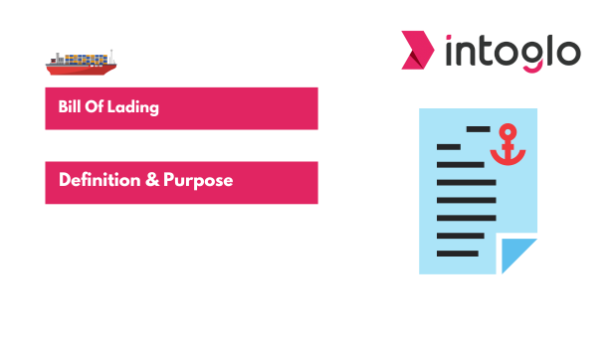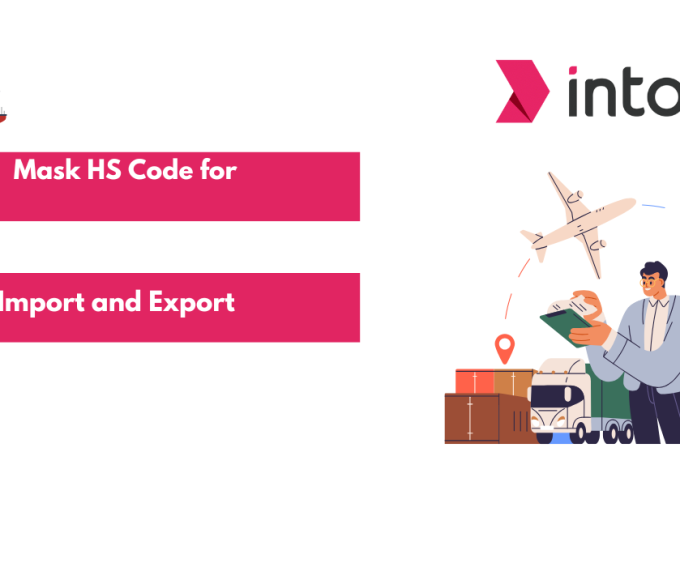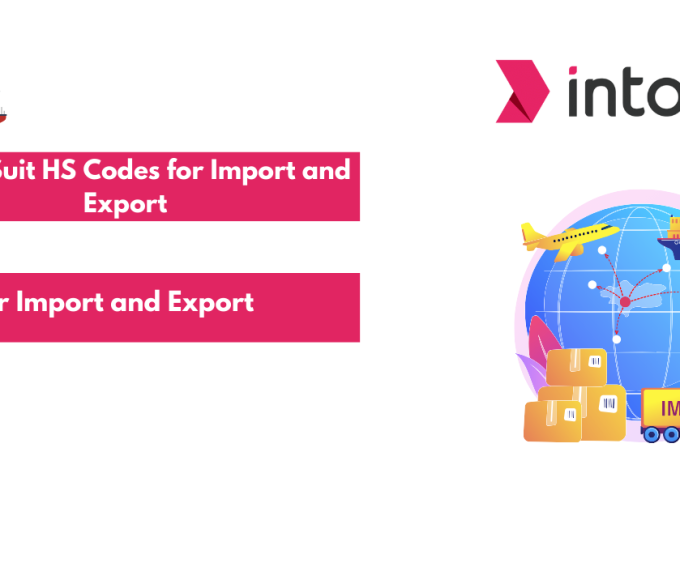Imagine shipping a container full of important merchandise overseas. It’s a big responsibility, and you need to be sure everything goes smoothly. That’s where the Bill of Lading (BL) comes in. Let’s break down what it is, its history, and why it’s essential in logistics.
Understanding the Bill of Lading (BL) and Its Origin
A Bill of Lading, often abbreviated as BL, is a legal document in the logistics sector. The term “Bill of Lading” originates from the Middle Ages when merchants needed a formal document to prove they had handed their goods to a carrier for transportation.
Dual-Function: Contract and Receipt
A BL’s significance goes beyond just being a simple receipt. It has two main functions:
1. Contract: The BL is a contract between the shipper and the carrier. It outlines the terms and conditions under which the goods will be transported, including details like the type of goods, the destination, and the agreed-upon route.
2. Receipt: The BL also acts as a receipt. It ensures that the carrier has received the goods in good condition. It is important for both the shipper and the receiver, as it records the shipment’s condition at the transfer time.
Understanding the meaning of BL is key to mastering the logistics and shipping industry. In the following sections, we’ll explore the importance of BL, its different types, and its primary functions.
Primary Functions of the Bill of Lading
The Bill of Lading holds a legal significance in shipping and trade. It serves multiple key functions crucial for the smooth operation of trade. Let’s break down these primary functions:
1. Acts as a Contractual Agreement Between the Shipper and the Carrier
A Bill of Lading generally functions as a contract between the shipper (the person or company delivering the goods) and the carrier (the person or company responsible for transferring the items). This contract outlines the terms and conditions for transporting the goods. It specifies details such as:
- Type of goods in shipment
- Destination
- Agreed-upon route
- Freight charges
- Responsibilities of both the shipper and the carrier
This contractual aspect ensures that both parties clearly understand their obligations and the expectations for the shipment.
2. Serving as Evidence of Receipt of Goods
Another importance of the Bill of Lading is its function as a receipt. When the carrier takes ownership of the goods, the shipper issues the Bill of Lading. This paper confirms that the carrier received the items in an excellent state and is responsible for their safe transportation. It typically includes:
- Description of the goods
- Quantity
- Condition at the time of receipt
This receipt is essential for tracking the shipment and verifying that the goods were handed over to the carrier as agreed.
3. Acting as a Document of Title to the Goods
One of the most important aspects of the BL is its role as a document of title. It means that whoever holds the Bill of Lading owns the goods. It allows the transfer of ownership from one party to another, which is particularly important in international trade. This feature facilitates:
- Selling the goods while they are in transit
- Using the BL as collateral for financing
- Simplifying the transfer of goods between different parties
The document of title function ensures that the goods can be traded, financed, and claimed efficiently and legally.
4. Facilitating International Trade by Connecting Various Parties Involved
The BL also plays a key role in facilitating international trade. It acts as a crucial link among all parties involved in the shipping process, such as:
- Shippers
- Carriers
- Receivers
- Banks
- Customs authorities
The Bill of Lading streamlines communication and coordination by serving as a common document recognized by all these parties. It ensures that everyone involved in the trade process has the necessary information and legal documentation to handle the goods adequately.
What Details are Included in the Bill of Lading (BL)?
The Bill of Lading (BL) contains essential information that helps ensure goods’ smooth transport and delivery. Here are the details commonly included in a BL:
1. Shipper and Receiver Information
- Shipper’s Name and Address: This is the person or company sending the goods.
- Receiver’s Name and Address: Also known as the consignee, this is the person or company receiving the goods.
2. Carrier Information
- Carrier’s Name and Address: The company responsible for transporting the goods.
3. Shipment Details
- Description of Goods: This includes the type of goods being shipped, often with specific details to identify them.
- Quantity of Goods: The number of items or units being shipped.
- Weight and Volume: The total weight and size of the shipment.
- Packaging Details: Information about the packaging of goods (e.g., boxes, pallets, containers).
4. Route Information
- Port of Loading: The location where the items/goods are loaded onto the carrier.
- Port of Discharge: The location where the goods will be unloaded.
- Destination: The final delivery location for the goods.
5. Freight and Charges
- Freight Charges: The cost of transporting the goods.
- Additional Charges: Any other fees related to the shipment, such as handling or storage fees.
6. Terms and Conditions
- Contractual Terms: The specific terms and conditions under which the goods are transported, including the carrier’s responsibilities and liabilities.
- Instructions for Handling: Any special instructions for handling the goods during transport.
7. Dates and Signatures
- Date of Issue: The date when the BL was created.
- Signatures: Signatures from the shipper, carrier, and sometimes the receiver confirm the details and agreement.
8. Document Number
- BL Number: A unique number assigned to the Bill of Lading for tracking and identification purposes.
These details ensure that all parties clearly and accurately understand the shipment, facilitating smooth and efficient transport of goods.
Importance of the Bill of Lading in Exports
The Bill of Lading is an essential legal document in the export process, serving multiple important functions. Let’s explore its significance in detail:
1. Ensures Control and Safety and Accountability of Shipment
The BL encompasses the control and detailed information it provides about the shipment. This document includes all the necessary details about the goods, such as type, quantity, and destination. It also records the condition of the goods at the time of shipment.
- Safety: With all this information, the shipper and carrier can ensure that the goods are handled properly throughout the journey, which helps maintain their safety.
- Accountability: The BL records the goods’ condition when they are handed over to the carrier. If there are any issues or damage upon delivery, the BL helps identify where and when the problem occurred, holding the responsible party accountable.
2. Safeguards Exporter’s Interests Before Payment is Secured
The Bill of Lading also protects the exporter’s interests, especially regarding payment.
- Proof of Shipment: The BL proves that the goods have been shipped as agreed. Exporters must ensure they have fulfilled their part of the deal.
- Document of Title: The BL acts as a document of title, meaning the goods are legally owned by whoever holds the BL. Exporters can retain control over the goods until they receive payment, as the buyer usually needs the original BL to claim the goods.
- Secure Payment: By holding the BL until payment is made, exporters can ensure they receive payment before the goods are released to the buyer. This reduces the risk of non-payment and safeguards their financial interests.
3. Serves as a Critical Component in the Documentation of International Shipping
The BL meaning includes its role as a vital piece of documentation in international shipping.
- Legal Proof: The BL provides legal proof of the receipt of goods, the contract of carriage, and the ownership of the goods. This is essential for resolving disputes and ensuring compliance with international trade laws.
- Customs Clearance: The BL is often required for customs clearance at import and export ends. It helps customs officials verify the shipment’s contents and ensures all regulations are followed.
- Smooth Trade Process: A standardized document like the BL helps streamline the shipping process. It ensures that all parties involved – shippers, carriers, receivers, and customs officials – have the necessary information to handle the goods properly and efficiently.
Negotiable and Non-Negotiable Bill of Lading
Negotiable Bill of Lading: It is a document that can be transferred from one party to another, allowing the transfer of ownership of the goods while they are in transit.
Example: A “To Order Bill of Lading” where the consignee field is filled with “To Order” or “To Order of [Name],” allowing the current holder to endorse it to another party.
Non-negotiable Bill of Lading: A non-negotiable Bill of Lading is a document where the consignee is specified and cannot be changed or transferred to another party.
Example: A “Straight Bill of Lading” where the consignee is specifically named (e.g., “XYZ Corporation”), ensuring the goods are delivered directly to the named consignee without the possibility of transfer.
Different Types of Bills of Lading
The Bill of Lading (BL) has various types, each serving specific functions and carrying distinct legal implications. Here’s a look at some common types of BLs:
1. Straight Bill of Lading
A Straight Bill of Lading is issued to a specific consignee and is non-negotiable. This means that only the named consignee can take delivery of the goods.
Legal Implications:
- Non-Transferable: The ownership of the goods cannot be transferred to another party.
- Direct Delivery: Ensures the goods are delivered directly to the designated consignee, minimizing risks of misdelivery.
2. Order Bill of Lading
A to-order Bill of Lading is negotiable and can be endorsed by the shipper to transfer ownership to another party. It can also be used to secure payment or as collateral.
Legal Implications:
- Transferable: Allows the shipper to transfer ownership by endorsing the BL.
- Security for Payment: This can ensure payment before the consignee takes possession of the goods.
- Flexibility: Provides flexibility in trade, allowing the transfer of ownership multiple times during transit.
3. Clean Bill of Lading
A Clean Bill of Lading is provided when the goods are received in good condition without damage or defects.
Legal Implications:
- Assurance of Condition: Confirms that the goods were in good condition when received by the carrier.
- Favorable for Letters of Credit: Often required by banks for payment under letters of credit, as it assures the condition of the goods.
4. Claused Bill of Lading
A Claused Bill of Lading, also known as a Foul Bill of Lading, indicates that the goods have defects or were damaged when received by the carrier.
Legal Implications:
- Notation of Defects: The BL will have notations about the defects or damages.
- Buyer’s Protection: Protects the buyer by providing a record of the condition of the goods upon receipt.
- Impact on Payment: May affect the payment process if banks or buyers refuse to accept a Claused BL.
5. Through Bill of Lading
A Through Bill of Lading covers transporting goods across multiple modes of transport (e.g., from a ship to a truck) or multiple carriers.
Legal Implications:
- Comprehensive Coverage: Covers the entire journey from origin to final destination.
- Simplifies Process: Reduces the need for multiple BLs for different legs of the journey.
- Carrier Responsibility: The initial carrier assumes responsibility for the entire transport, even if multiple carriers are involved.
6. Ocean Bill of Lading
An Ocean Bill of Lading specifically covers the transport of goods by sea.
Legal Implications:
- Maritime Law: Governed by maritime law, which includes specific rules and conventions for sea transport.
- Port-to-Port: Typically used for port-to-port shipments, detailing the terms of carriage by sea.
- Proof of Shipment: This provides proof of the shipment for both the shipper and the consignee. It is often used for customs clearance and import/export documentation.
Understanding the specific functions and legal implications of various Bills of Lading (BL meaning) is crucial for smooth international trade. Every kind of BL serves a unique purpose and comes with distinct legal considerations. Intoglo’s team of experts safeguards a smooth transaction by ensuring all parties involved have clear and well-defined rights and responsibilities.
Comparative Analysis: Bill of Lading vs. Invoice
Bill of Lading and Invoice serve distinct purposes and contain unique information. Understanding their differences is crucial for efficient logistics and financial management.
1. Purpose
- Bill of Lading: Primarily functions as a receipt for goods, a contract of carriage, and a document of title. It legally binds the shipper and carrier by specifying the goods’ kind, quantity, and destination. It assures the carrier acknowledges receipt of the goods and agrees to transport them under specified circumstances.
- Invoice: Acts as a financial document the seller issues to the buyer. It lists the goods or services provided, their prices, and the total amount due. The invoice facilitates payment by providing detailed billing information and payment terms.
2. Legal Significance
- Bill of Lading: Gives evidence of the contract of carriage and ownership of goods. It is critical for resolving disputes, claiming insurance, and customs clearance. The B/L can be negotiable, allowing the transfer of ownership during transit.
- Invoice: Primarily a financial record. It supports accounting entries and is used for financial audits and tax purposes. While it does not convey ownership, it helps verify the terms of the sale and the amount payable by the buyer.
3. Content
- Bill of Lading: Includes information such as the shipper’s and consignee’s details, description of goods (type, quantity, weight), terms of shipment, origin and destination, and signatures from involved parties. It may also include handling instructions and freight charges.
- Invoice: Lists the seller’s and buyer’s information, itemized description of goods or services, unit prices, total amount due, payment terms, and due date. It may include tax details and additional charges, such as shipping costs.
4. Function in the Supply Chain
- Bill of Lading: Facilitates logistics and transportation. It ensures goods are shipped and received under agreed terms and conditions. The B/L is crucial for tracking shipments and verifying delivery.
- Invoice: Facilitates financial transactions. It ensures the seller gets paid for the goods or services provided. The invoice initiates the payment process and provides the necessary details for the buyer to make payment.
5. Financial and Legal Transactions
- Bill of Lading: Can be used to obtain financing (e.g., under a letter of credit) and serves as collateral for loans. It also plays a role in customs clearance and insurance claims.
- Invoice: Essential for recording sales transactions and managing accounts receivable. It ensures the buyer and seller agree on the payment terms and amount due.
The Role of the Bill of Lading in Digital and Blockchain Technologies
The Bill of Lading, a traditional paper document in global trade, is undergoing a transformative evolution with the arrival of digital and blockchain technologies. Here’s how these innovations are reshaping its role:
1. Digitalization for Efficiency: Traditional paper-based BLs are being digitized. It enables faster processing, reduced paperwork, and enhanced logistics and supply chain management efficiency. Digital BLs streamline document handling, improving port turnaround times and reducing administrative costs.
2. Enhanced Transparency and Traceability: Blockchain technology revolutionizes B/Ls by providing an immutable, transparent, decentralized ledger for recording transactions. Each transaction involving the B/L is recorded in real time, ensuring a single version of the truth is accessible to all authorized parties.
3. Smart Contracts for Automation: Blockchain-enabled smart contracts can automate B/L processes, triggering actions such as releasing payment upon delivery confirmation. Incorporating smart contracts helped Intoglo reduce manual intervention, speed up transactions, and enhance trust among parties by ensuring that contractual terms are executed precisely as agreed.
4. Improved Security and Fraud Prevention: Blockchain’s cryptographic features and decentralized nature make digital B/Ls highly secure against tampering and unauthorized access. It reduces the risk of fraud and improves data integrity throughout the supply chain.
5. Interoperability and Standardization: Digital B/L platforms based on blockchain aim to establish global standards and interoperability across different trade ecosystems. It facilitates seamless communication and data exchange among stakeholders, regardless of geographic location or organizational boundaries.
As these technologies improve and advance, their incorporation into mainstream trade processes offers additional optimization and innovation throughout the supply chain ecosystem.
Conclusion
The Bill of Lading is an indispensable tool in modern global trade, serving critical functions for exporters, importers, and carriers alike. It facilitates the orderly transfer of goods and ensures transparency, security, and legal compliance throughout the shipping process.
As digital and blockchain technologies redefine logistics and supply chain management, Intoglo stands at the forefront, pioneering innovative solutions to streamline BL processes. Embracing these advancements enhances operational efficiency and strengthens trust and accountability across international trade networks.









Leave a comment